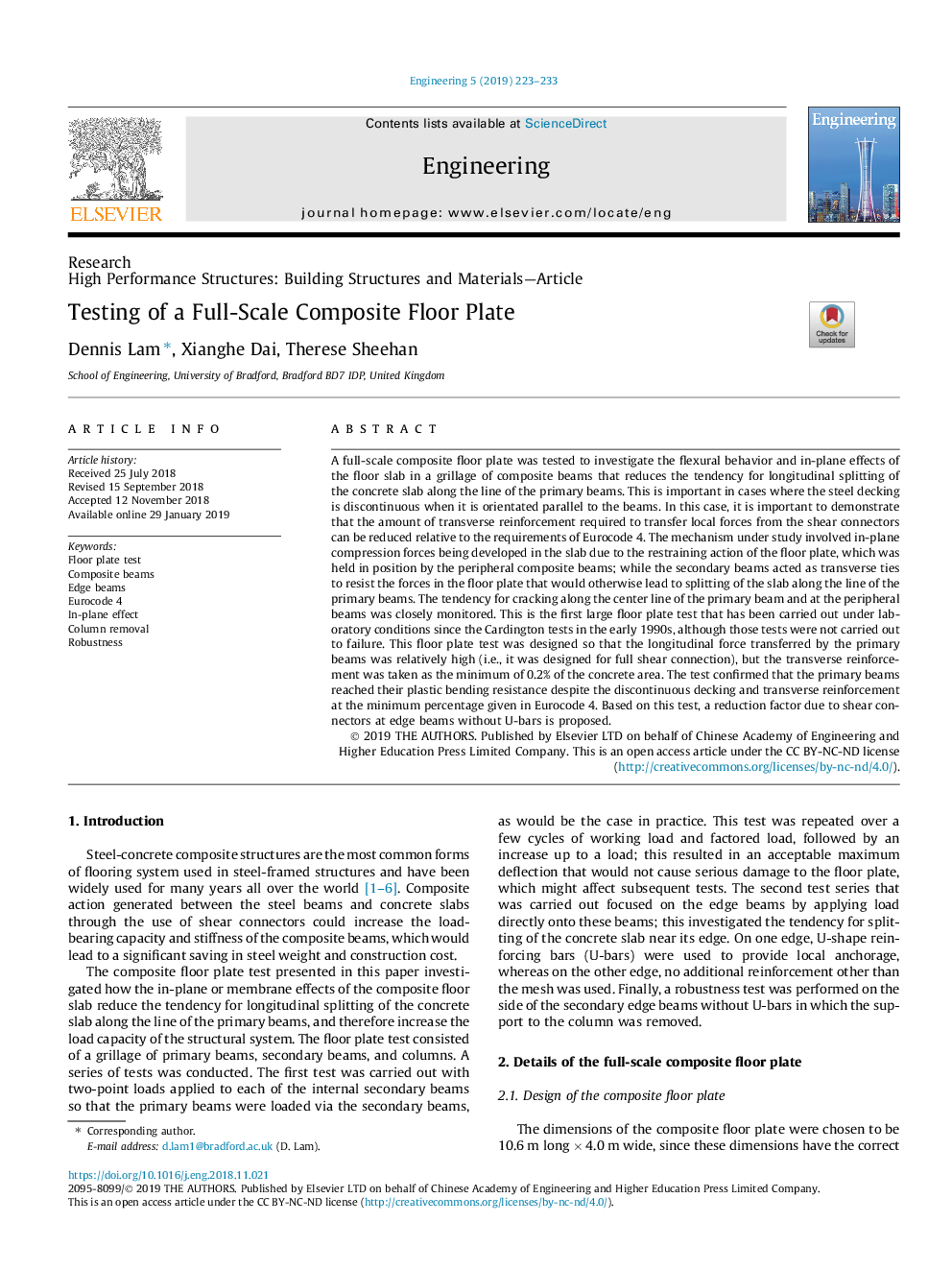| Article ID | Journal | Published Year | Pages | File Type |
|---|---|---|---|---|
| 13433194 | Engineering | 2019 | 11 Pages |
Abstract
A full-scale composite floor plate was tested to investigate the flexural behavior and in-plane effects of the floor slab in a grillage of composite beams that reduces the tendency for longitudinal splitting of the concrete slab along the line of the primary beams. This is important in cases where the steel decking is discontinuous when it is orientated parallel to the beams. In this case, it is important to demonstrate that the amount of transverse reinforcement required to transfer local forces from the shear connectors can be reduced relative to the requirements of Eurocode 4. The mechanism under study involved in-plane compression forces being developed in the slab due to the restraining action of the floor plate, which was held in position by the peripheral composite beams; while the secondary beams acted as transverse ties to resist the forces in the floor plate that would otherwise lead to splitting of the slab along the line of the primary beams. The tendency for cracking along the center line of the primary beam and at the peripheral beams was closely monitored. This is the first large floor plate test that has been carried out under laboratory conditions since the Cardington tests in the early 1990s, although those tests were not carried out to failure. This floor plate test was designed so that the longitudinal force transferred by the primary beams was relatively high (i.e., it was designed for full shear connection), but the transverse reinforcement was taken as the minimum of 0.2% of the concrete area. The test confirmed that the primary beams reached their plastic bending resistance despite the discontinuous decking and transverse reinforcement at the minimum percentage given in Eurocode 4. Based on this test, a reduction factor due to shear connectors at edge beams without U-bars is proposed.
Related Topics
Physical Sciences and Engineering
Computer Science
Computer Science (General)
Authors
Dennis Lam, Xianghe Dai, Therese Sheehan,
